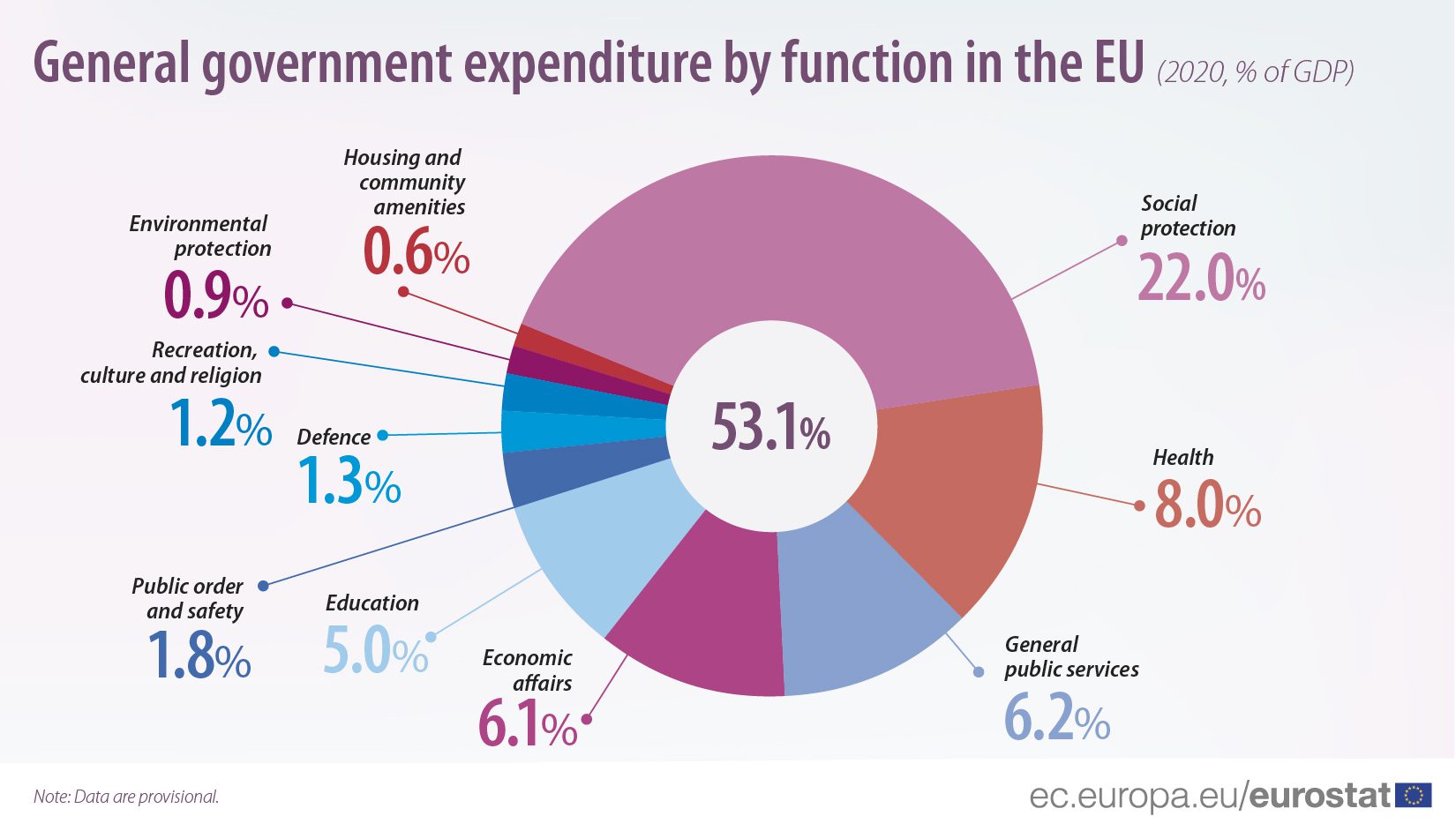In a press release on February 28th, Eurostat reported that total government expenditure in the European Union increased significantly in 2020 over the previous year. In current prices, governments within the EU consumed 53.1% of total gross domestic product, GDP. This is a significant increase from the 46.5% government share of GDP in 2019.
In nominal figures, the increase amounted to €598 billion, which was 9.2% higher than in 2019.
Of the €7.1 trillion in government spending in 2020, a total of 67% went to traditional welfare-state programs: €2.94 trillion was spent on social protection programs, €1.07 trillion was appropriated for health-care expenditures, and €671 billion was used for education. Housing and community amenities received only residual funding.
Economic affairs, sometimes referred to as economic development, used up €821 billion, €7 billion less than was allocated to general public services.
A total of €420 billion was spent on core functions of government, namely public safety and national defense.
Almost every area of government spending in the EU received more funds in 2020 than in 2019. Outlays on social protection grew by 8.8%, from €2.7 trillion to €2.94 trillion. The largest increases were seen in unemployment benefits, and in sickness and disability benefits.
Economic affairs outlays expanded by one third, from €615 billion to €821 billion.
While total government spending increased, total government revenue fell from 2019 to 2020. The decline of €247 billion was equal to 3.8% of 2019 revenue. A total budget deficit of €77 billion in 2019 widened to €921 billion in 2020.
It is not yet clear how government finances panned out for 2021, as Eurostat has not yet released data for the fourth quarter.






